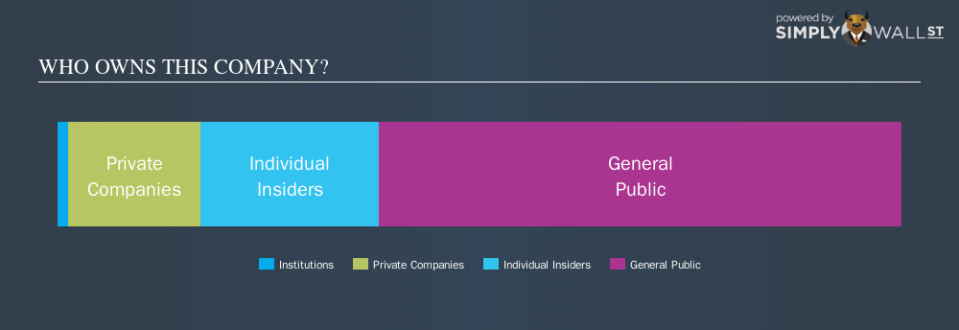Breaking Down DATA Communications Management Corp’s (TSE:DCM) Ownership Structure

In this article, I will take a quick look at DATA Communications Management Corp’s (TSE:DCM) recent ownership structure – an unconventional investing subject, but an important one. The impact of a company’s ownership structure affects both its short- and long-term performance. Since the same amount of capital coming from an activist institution and a passive mutual fund has different implications on corporate governance, it is a useful exercise to deconstruct DCM’s shareholder registry.
Check out our latest analysis for DATA Communications Management
Institutional Ownership
Institutional investors transact in large blocks which can influence the momentum of stock prices, at least in the short-term, especially when there is a low level of public shares available on the market to trade. A low institutional ownership of 1.35% puts DCM on a list of companies that are not likely exposed to spikes in volatility resulting from institutional trading.
Insider Ownership
Insiders form a group of important ownership types as they manage the company’s operations and decide the best use of capital. Insider ownership has been linked to better alignment between management and shareholders. 21.18% ownership of DCM insiders is large enough to make an impact on shareholder returns. In general, this level of insider ownership has negatively affected underperforming (consistently low PE ratio) companies and positively affected the companies that outperform (consistently high PE ratio). It may be interesting to take a look at what company insiders have been doing with their holdings lately. Insiders buying company shares can be a positive indicator of future performance, but a selling decision can simply be driven by personal financial needs.
General Public Ownership
A big stake of 61.82% in DCM is held by the general public. With this size of ownership, retail investors can collectively play a role in major company policies that affect shareholders returns, including executive remuneration and the appointment of directors. They can also exercise the power to decline an acquisition or merger that may not improve profitability.
Private Company Ownership
Potential investors in DCM should also look at another important group of investors: private companies, with a stake of 15.64%, who are primarily invested because of strategic and capital gain interests. This kind of ownership, if predominantly strategic, can give these companies a significant power to affect DCM’s business strategy. Thus, potential investors should look into these business relations and check how it can impact long-term shareholder returns.
Next Steps:
Institutional ownership in DCM is not at a level that would concern investors. We are less likely to see sustained downtrends or significant volatility resulting from large institutional trading. However, ownership structure should not be the only focus of your research when constructing an investment thesis around DCM. Rather, you should be looking at fundamental drivers such as DATA Communications Management’s past track record and financial health. I urge you to complete your research by taking a look at the following:
Future Outlook: What are well-informed industry analysts predicting for DCM’s future growth? Take a look at our free research report of analyst consensus for DCM’s outlook.
Past Track Record: Has DCM been consistently performing well irrespective of the ups and downs in the market? Go into more detail in the past performance analysis and take a look at the free visual representations of DCM’s historicals for more clarity.
Other High-Performing Stocks: Are there other stocks that provide better prospects with proven track records? Explore our free list of these great stocks here.
NB: Figures in this article are calculated using data from the last twelve months, which refer to the 12-month period ending on the last date of the month the financial statement is dated. This may not be consistent with full year annual report figures.
To help readers see past the short term volatility of the financial market, we aim to bring you a long-term focused research analysis purely driven by fundamental data. Note that our analysis does not factor in the latest price-sensitive company announcements.
The author is an independent contributor and at the time of publication had no position in the stocks mentioned. For errors that warrant correction please contact the editor at editorial-team@simplywallst.com.

 Yahoo Finance
Yahoo Finance 
